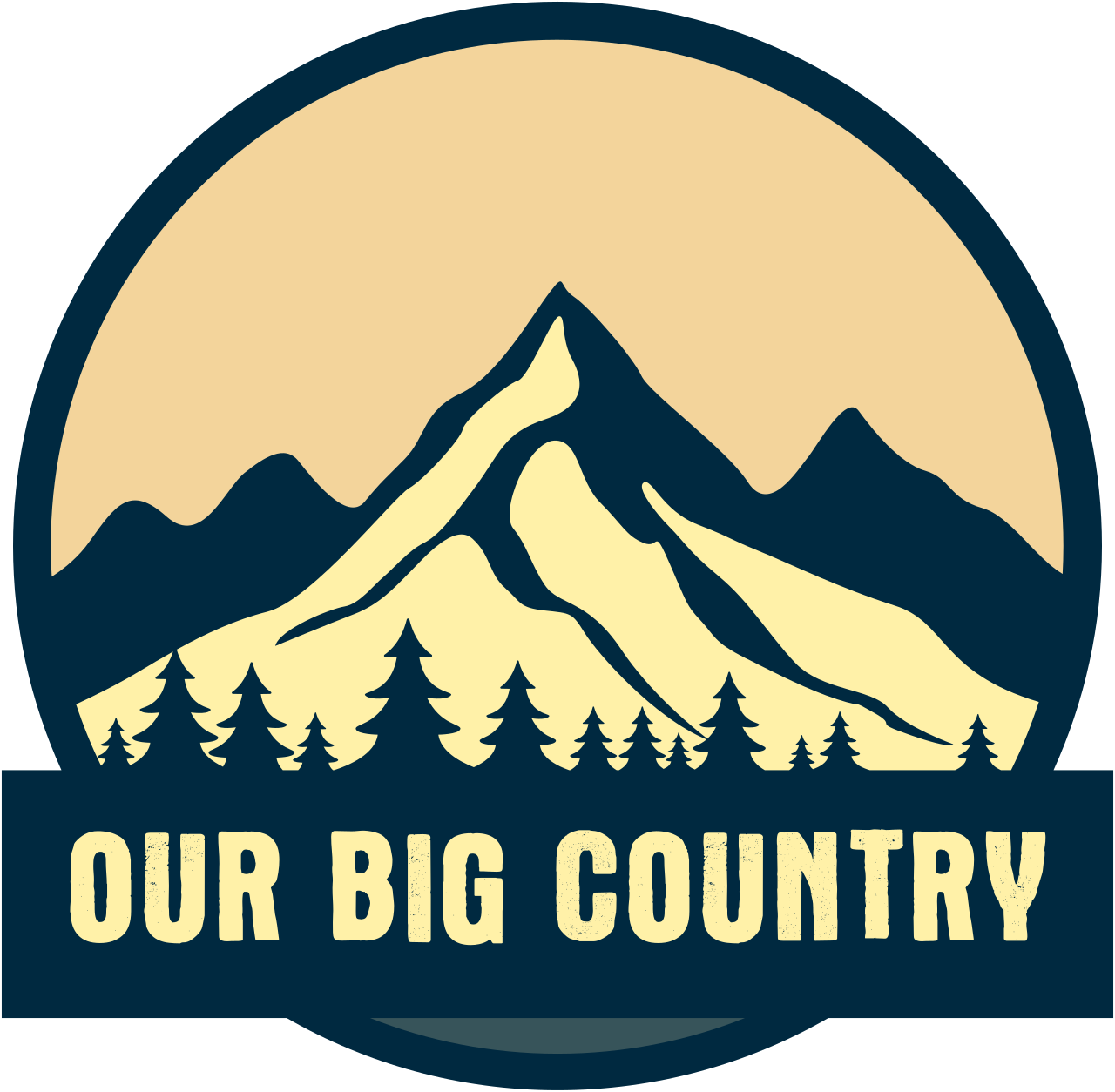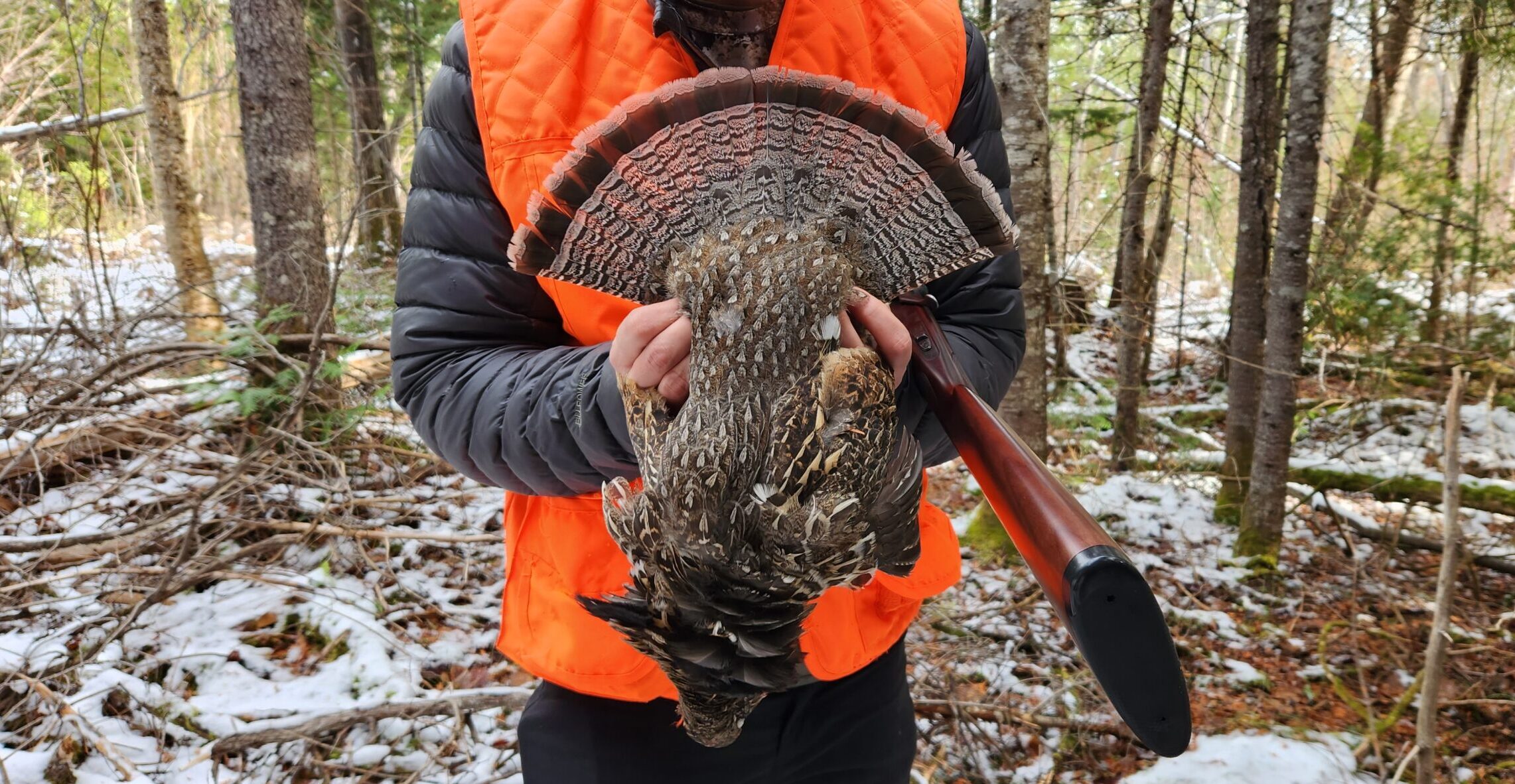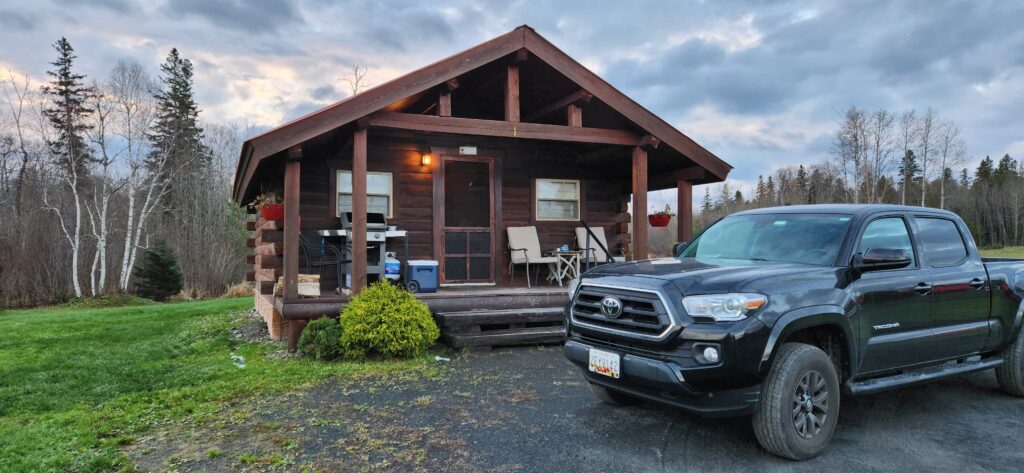
After a thirteen hour drive we arrived in Aroostook County Maine. Our little cabin on Eagle Lake was about twenty minutes from Canada.
We met the guide at sunrise, at his parent’s lakehouse on another lake. He took us in his truck for a short trip down the road and then onto the logging roads, looking for grouse along the way to the first spot. It was cold and there was snow on the ground, which didn’t bode well for them being in the more open cover where they can be found earlier in the fall.
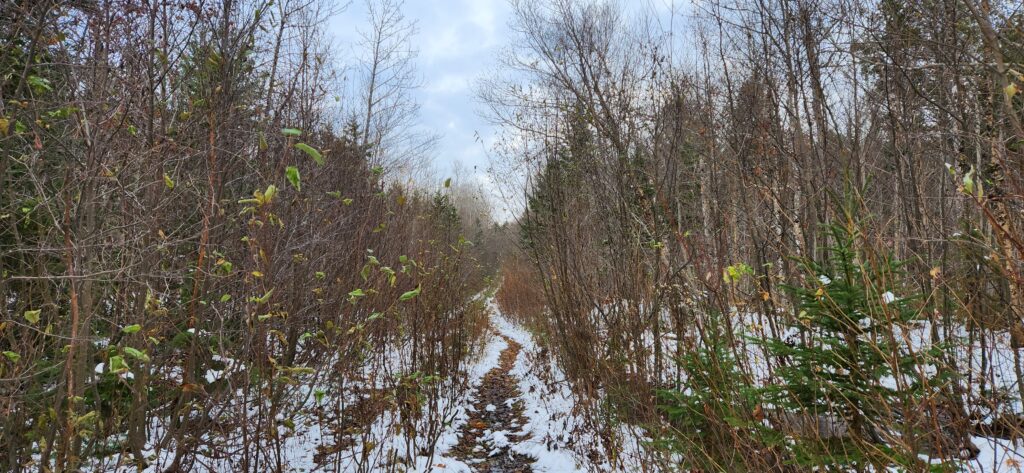
We stopped at a trail that began through open pines, and then got denser and denser. We didn’t see any grouse there. Any notion that this might be easy was basically squashed by this point.
On the second walk, we followed an increasingly overgrown logging road to where it crossed a stream. Beyond that it was overgrown to the point of barely being recognizable as a path. It alternated between open sections lined with pines, and overgrown sections choked by alders.
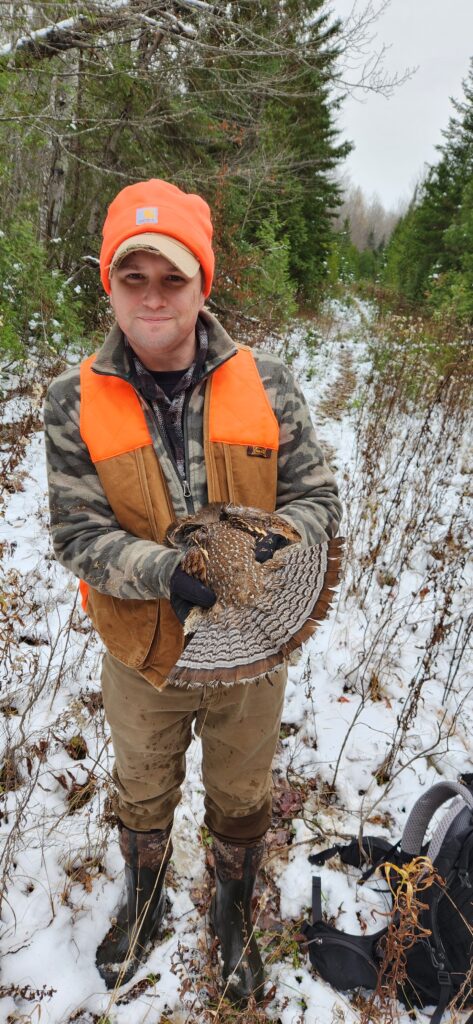
We thought upon later inspection that it was a red phase, but are now pretty certain that it is a grey phase with a copper tail band. The copper tail band is a cool trait that only occurs about 5% of the time. The tail was a little tattered at the edges, but still a really cool bird.
We finished what would be the longest walk without seeing anything else, and then proceeded to drive for miles and miles of logging roads looking for birds and finding none.
Right around noon the guide spotted two birds working into a section of old-growth pines. We moved on them, and I had a shot right away, but I wanted Corey to get one. We pushed into the woods as they slipped further away.
Mine flushed and went to a pine thicket. Corey’s flushed, and just when I thought it was over, he shot. Still believing all was lost I started towards them when I realized both Corey and the guide saw the bird fall and expected it down. Before long, Corey had recovered it. I exhaled in total relief; We did it. Corey’s was the perfect specimen of a grey phase with a black tail band.
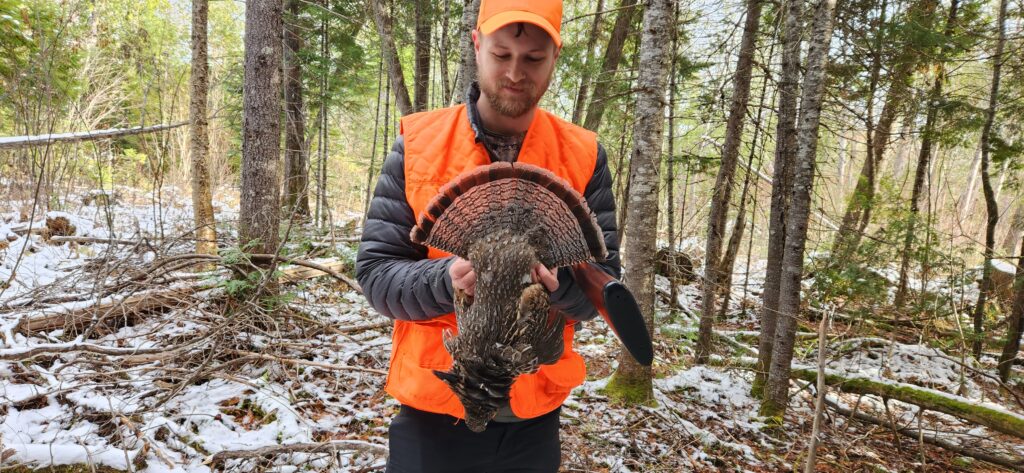
The guide encouraged me to move on the bird I saw flush into the pine thicket, and sure enough, when I pressed in, there it went. I didn’t have a shot, but this was something that would happen to us repeatedly: after the first flush, they were landing in identifiable spots (not precise spots, but little patches of cover) 20-30 yards away.
We continued to drive and look between spots where we’d stop and walk. Eventually we came to a road that was being choked by alders so thick they were scratching the truck. Forced to stop there, we got out and walked down the road and turned down two-track towards a thicket. As we walked down the hill the guide stopped abruptly and pointed one out, hiding in the tall grass between the tracks about 30 yards ahead.
It took me a moment to see it, and as I took a step to close the distance, the guide said I should take the shot now- that we’d only have another moment before it was gone. I raised up right away and took it immediately. My second bird was also a classic grey phase, with a nice full fan. I didn’t take a pic, regrettably, because I just wanted to get after it in the hopes of finding more birds, but I do have its fan.
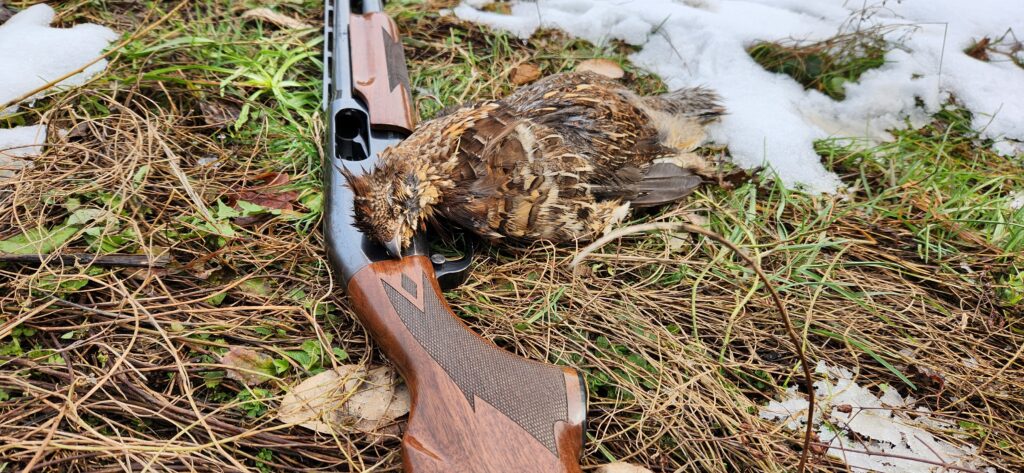
We drove and stopped a few more times. At one point the guide saw one swoop across the road ahead of us, and we moved on it to no avail. That was all we saw in about 10 hours of hunting, with maybe a 15 minute break for snack bars. We were happy. It was hard, but we went hard, and we each got a grouse from the Great North Woods.
The second day really allowed us to test what we learned and condense it into some actual understanding of the birds there.
First, I’ll just say for the record regarding the birds I got on the first day, that I have zero compunction about taking “potshots;” I’m shooting them to put them in a pot, not to show off how awesome I am at shooting. I do understand the practical concerns of shooting on the ground with dogs around, but I don’t have that problem, and even if I did, as long as a dog was held back or otherwise accounted for, I wouldn’t worry. I actually really like that term for swatting/ sleucing, and am going to replace them with it going forward. You’ll be happy to hear at the outset tho, that of all the shots we’d take on the second day, not one was a potshot. (Reinforcing my point that you should take them when you’re lucky enough to get them.)
Having found it so difficult with the guide, we were not super optimistic that going on our own would be productive, but we were up there, and we knew we could at least go through the same motions as the day before, though uncertain if we were in the right places. Luckily, the second day was a little warmer and sunnier, melting off the snow and encouraging the birds to be more active.
We headed to a different area than we had hunted the day before. In this part of Maine, there are not places you can hunt- there are places you can’t hunt; You can basically hunt everywhere.
One a larger road not far off a decent sized pond/ lake, we saw a path that seemed to go into good looking pine cover. We got out and walked in, and within 15 minutes, as I drifted away from Corey I heard two cracks from his double-barrel. I called over and he said he flushed one and saw where it flew. I circled around to get down range from it as Corey pushed into the pine thicket. I heard the flush and watched it sail away, just out of range. In hindsight I would have taken a shot- although it was far it was in the open for a few seconds longer than usual.
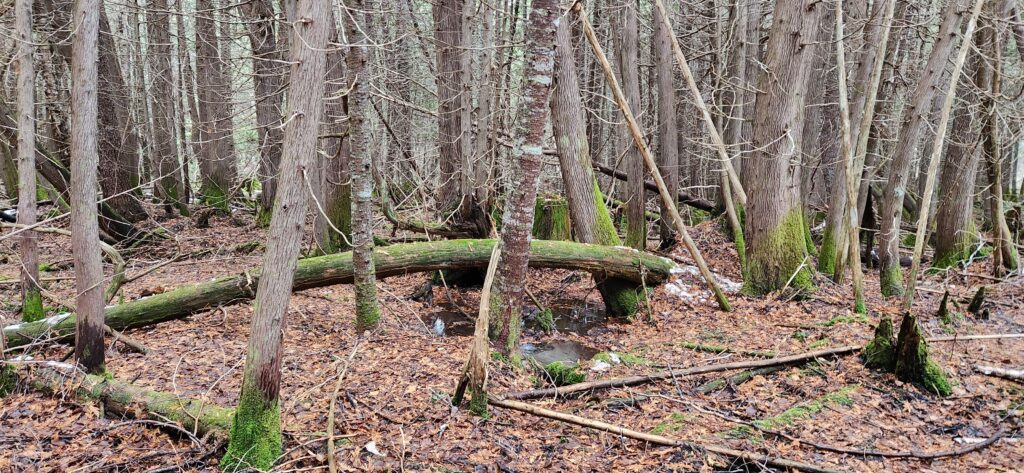
At this point we were excited- we’d gotten into a bird at the first place we stopped to walk around. We continued driving and stopping maybe a few times before pulling off to walk down a road that skirted the top of a pine thicket with a brook running through it (water was also a key indicator of good habitat). At the start of this road, 20 yards from the truck, was a gravel pile intended to prevent traffic down a sideroad. As we walked over this maybe 6ft pile of gravel, there, 10 yards in front of us on the road was a grouse. Plain as day. He flushed to the left into the pine thicket and Corey shot twice… Though I thought he was hit, he wasn’t folded so I also shot. Believing we’d both struck it I followed on quickly down into the pine woods towards the raging brook, worried that the bird would fall into the water and get swept away. As Corey ran down stream to look, I crossed the brook and began searching the ground on the peninsula where it seemed to be heading. I looked all over, under every bit of brush from every angle. When I finally stopped in exasperation, from ten feet above my head, right where I had been pacing below it for several minutes, it flushed and sailed off into the woods, unphased by two more misses from the “Wingmaster.” That was the best chance we would have; It’s not easy under any circumstances.
The next chance we got was upon pulling into a “parking area” at the top of another overgrown road. As we pulled in, Corey saw a bird sail across the road behind us. Having seen where it went, we ran up into position. As Corey pushed into the woods where we saw it enter, I was further in looking back and waiting for a flush. When it came, I was ready, the bird was far but low to the ground. I had room to wind, but am certain I missed behind. I didn’t bother with a follow-up. We tried to find it again, but we were never able to locate birds after the second flush.
As we started in the afternoon I walked down to a pond where I busted 2-3 flocks of half a dozen ducks 80+ yards out. I couldn’t tell what they were but they seemed like divers.
The next bird we didn’t actually get on, but saw plain as day take off from the side of an alder choked road and fly up into some tall pines. We worked around looking for it, but it was probably just sitting still up there and mocking us.
Late in the day we had one more good chance, when a bird flushed just beside and behind Corey, but he had some trouble with his safety. I didn’t see or have a shot at that one. We were admittedly walking down a path towards what looked like good covers, and this bird was tucked up in the kind of open woods we’d been skipping over, so I understand why he wasn’t ready at that moment.
The covers we found were mostly bottoms with water (streams, swamps created by beavers, or even just large puddles) and either alder thickets or a stand of young, dense pines- preferably both.
They don’t really seem to “hang out on the roads…” although they do apparently come to them for grit and to sun… but the roads are everywhere, so they inevitably cross through covers. Corey probably has better pictures of this, but these are also not “roads,” as much as dirt/ gravel paths and two-tracks, at varying stages of being reclaimed by woods based on the recency of logging activity in the area.
As I described, we got many second chances after the first flush; They were reliably going 20-30 yards on the first flight into the nearest thick cover. With a little more patience, we probably could have spotted them in several of these instances.
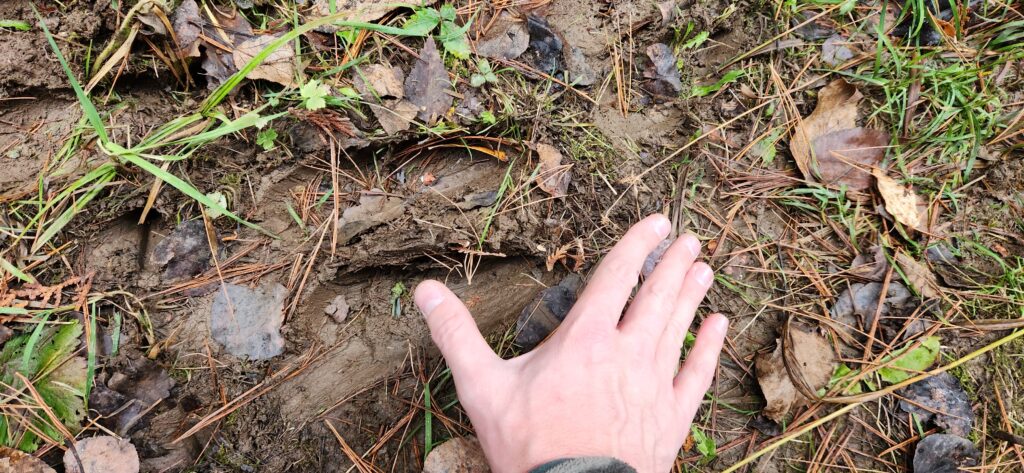
All in all it was a pretty good time in a pretty wild place. It’s a seemingly endless expanse of northern forests. There are far fewer broadleaf trees and only smaller kinds. We saw moose sign everywhere as well as three bear bait setups and blinds. Animal life was surprisingly sparse, I think we saw just a few pine squirrels. One of the cooler new species we saw were grey jays. You guys might have them in northern WI, but they seem to come around and check out what you’re up to.
All in all it was a pretty good time. We had success with the guide, but we were also able to get into some action on our own; We actually had the same number of genuine chances and sightings as we did with the guide on a much more casual day of hunting. Though like I mentioned, the weather was a little bit more favorable.
Having now seen them and gotten just a little xp, I’m super excited to hear what you get into and get out there with you. It’s a shame we can’t really get more into upland hunting in the east, but at last I now know it’s something that we can travel to get into.
